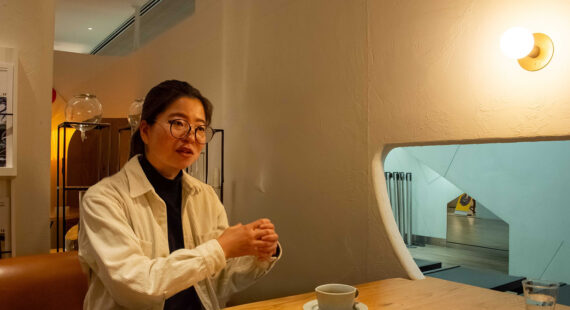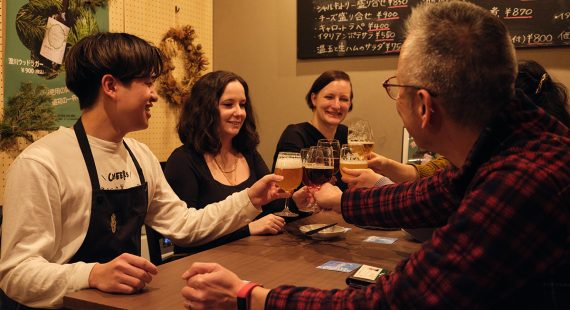Hokkaido is a treasure trove of delicious food. There is a variety of tasty foods in Hokkaido such as seafood, Genghis Khan (lamb BBQ), and soup curry, but ramen noodles are the most popular of all. Ramen is so essential to the Japanese diet that it can be called the soul food of the Japanese people. Many people are particular about ramen, and online articles introducing popular ramen restaurants get many views. Long queues can always be seen in front of popular ramen restaurants. It is nothing for ramen lovers to wait an hour for a delicious bowl of ramen. Some even come all the way from Honshu, the mainland of Japan, to Hokkaido just to eat a bowl of ramen from highly reputed restaurants.
Whether you are a ramen beginner or an expert who has already eaten popular ramen in Honshu and wants to try all the recommended ramen in Hokkaido, this article is written for you. We will offer a multi-faceted introduction to ramen to satisfy both demands.
Hokkaido Treasure Island Travel Inc. offers Ultimate Sapporo Ramen Experience tours so that even first-time visitors to Hokkaido can easily enjoy ramen. Custom-made tours can be arranged to fit your schedule. You can also create your own original tour by combining it with other tours.
Table of Contents:
1. The soul food of the Japanese people
2. What is ramen?
3. Tips to enjoy ramen
4. A history of ramen
5. Popular ramen restaurants in Hokkaido
– Sapporo miso ramen
– Hakodate salt ramen
– Asahikawa soy sauce ramen
– Other local ramens: Kushiro, Muroran
1. The soul food of the Japanese people
Ramen in Japan is more than just a noodle dish; it is a part of Japan’s distinctive food culture with a history and various regional characteristics. Hokkaido is especially famous for its delicious ramen, and the number of ramen restaurants in Hokkaido is the second largest in Japan after Tokyo. Each region, such as Sapporo, Asahikawa, and Hakodate, has its own unique ramen restaurants. Only ramen shops that have gained a good reputation can survive in these regions.
The popular restaurants’ ramens are sometimes commercialised as instant noodles with their own unique taste and sold in many stores throughout Japan for people who want to try the restaurants’ ramen even if they live far away. The ramen section in supermarkets offers an astonishing variety of instant ramen.
This article provides an overview of ramen, tips for enjoying ramen, an introduction of its history, and lists of recommended ramen restaurants by region.
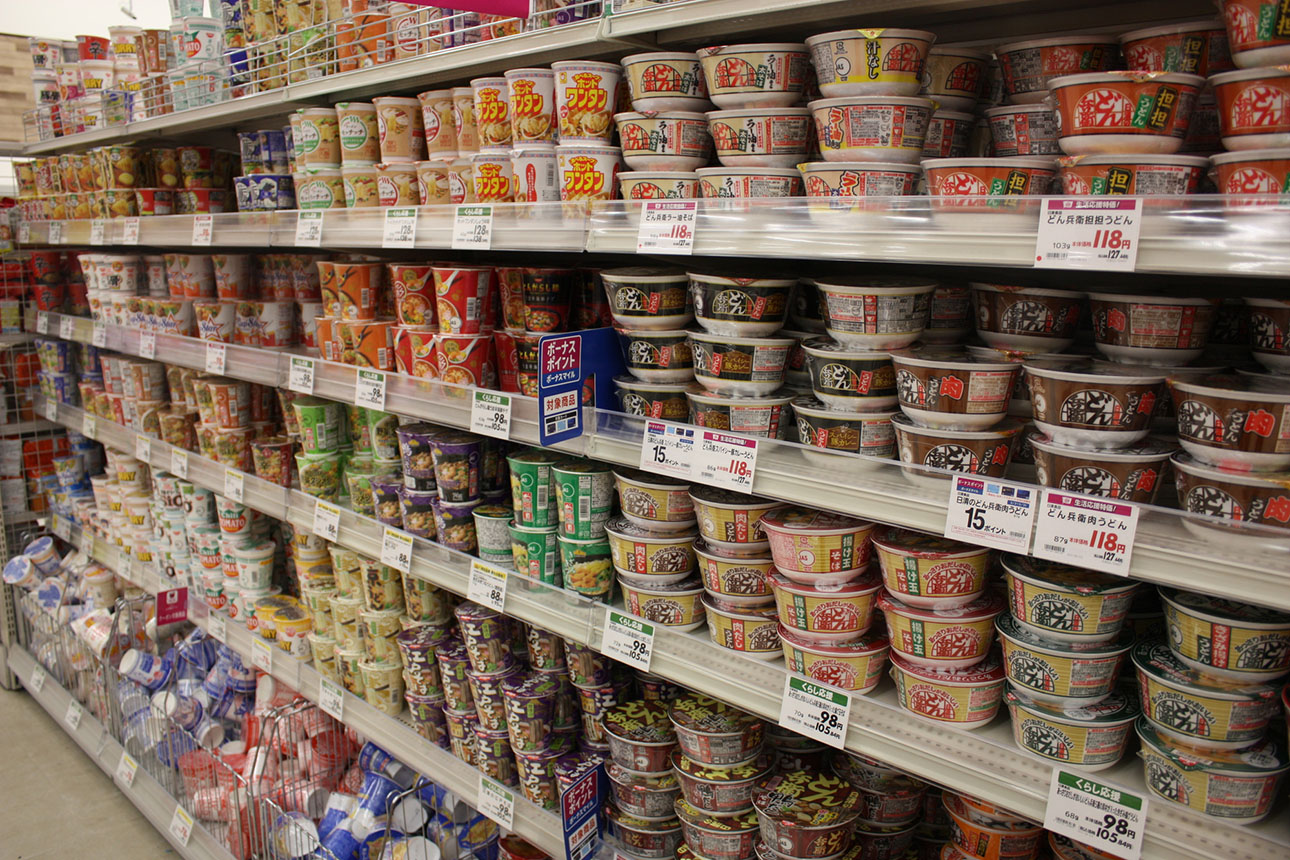
2. What is ramen?
Ramen is a type of noodle dish consisting of three components: noodles, soup, and topping. The simplicity of ramen allows room for various innovations, and new styles of ramen stores open every year.
The soup is the key to the flavour of ramen. There are three main versions of ramen: soy sauce, miso, and salt flavours. Sapporo ramen is famous for its miso flavour. In addition to these three types, Hakata, a northern city on Kyushu, is famous for its white pork bone broth. The ramen chefs show their skill in creating the special flavours of their soup with bonito, kelp kombu, chicken bones, vegetables, and other ingredients.
When the ramen you order is served, take a sip of the soup first to get a taste of the restaurant.
Components of ramen:
1) Soup
Basic flavours of ramen soup are miso, soy sauce (shoyu), and salt (shio). To make ramen soup, the following ingredients are used.
(A)
Broth (Dashi): Various ingredients are used to make broth. They vary according to each ramen restaurant. For example, possible ingredients include pork bones, chicken bones, beef bones, seafood, dried seafood, dried vegetables, vegetable potage, kelp kombu, dried shiitake mushrooms, etc.
(B)
Sauce (Tare): This is made from salt, soy sauce, miso, and other basic seasonings mixed with paste or powdered meat, vegetables, seafood or other ingredients. Tare is added to dashi to make soup.
(C)
Flavouring oil: This adds umami flavour and also serves as a membrane to prevent the soup from getting cold. The oils used include scallion oil, fried garlic oil (ma-yu), spicy oil, lard or baked lard, chicken oil, and shrimp oil.
2) Noodles
The main ingredients of noodles are wheat flour and an alkaline salt solution called kansui, which is mixed with the flour to make it soft and elastic, and gives it its yellow colour. Kansui yellow noodles are characteristic of ramen. Noodles are usually made by local noodle makers and are sold to restaurants. The texture and thickness varies from shop to shop. Some ramen chefs order special noodles from the noodle maker. Thin, thick, straight, or curly noodles give each restaurant its own unique flavour. Noodles are chosen for their compatibility with the soup.
(3) Toppings
Common ramen toppings are roasted pork fillet (chashu), seasoned bamboo shoots (menma), naruto (processed fish paste with a red and white spiral pattern in the centre), green onions, and boiled egg. Some restaurants have their own unique toppings. Hokkaido ramen may have toppings such as cubed butter, corn, crab, or scallops, which are local specialties.
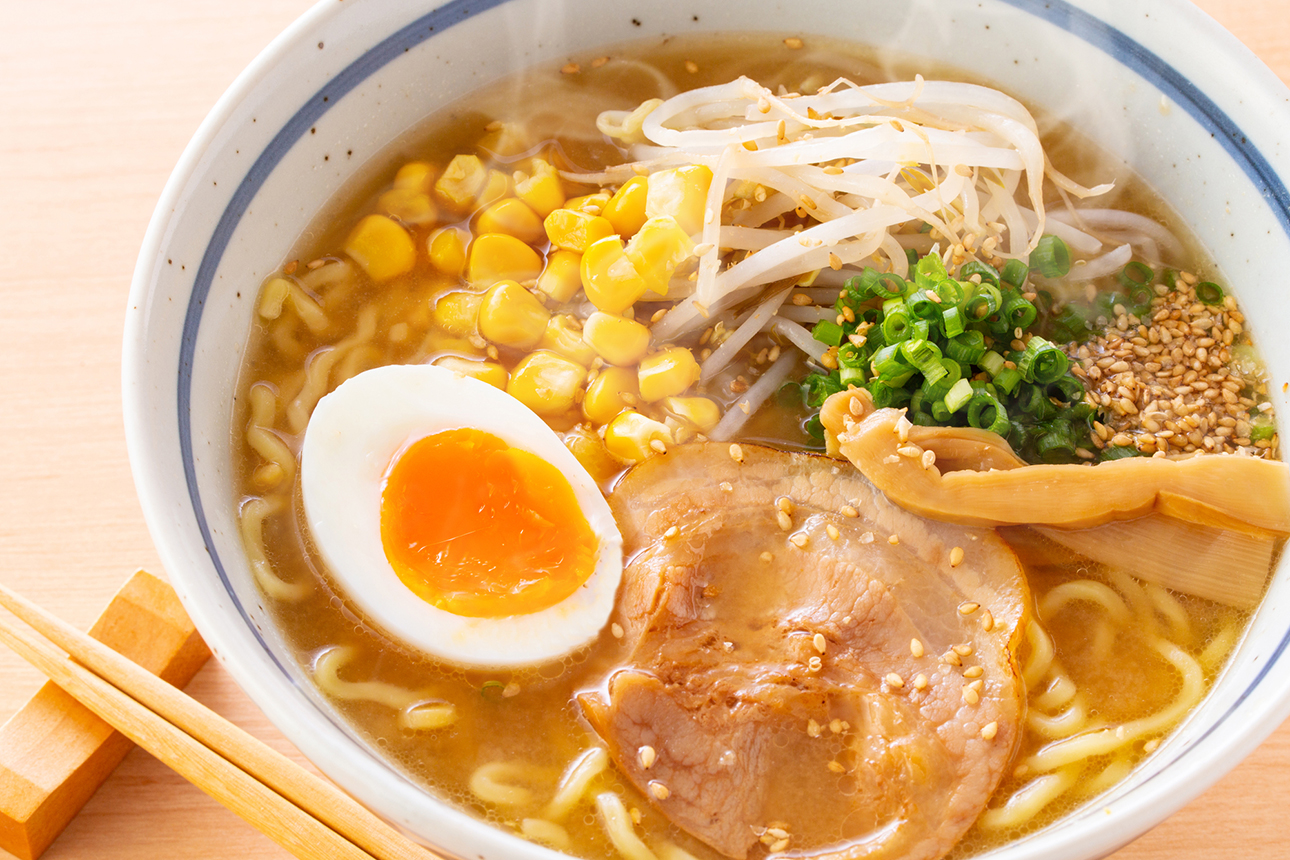
3. Tips to enjoy ramen
Slurp!
Have you ever tried Japanese noodles? Soba, udon, ramen, and many other types of noodles are available, but the most distinctive feature of the Japanese style of eating noodles is to slurp. By slurping, Japanese people believe they can enjoy the aroma of the soup and feel the noodle going down smoothly. You might think it is bad manners to make noise when you eat. However, that is not true in Japan where it is a part of the food culture that adds enjoyment to the noodles. When in Rome, do as the Romans. Try slurping ramen like Japanese people. You will surely find a new way to enjoy food.
The need to wait for popular restaurants
There is always a long queue at popular ramen shops. Japanese people think that waiting is a necessary step to enjoy delicious food. It’s like waiting to ride a popular attraction at an amusement park: the longer you wait, the more anticipation you have and the greater the pleasure you feel when you finally get to your ramen. Even the waiting time is part of the entertainment.
4. A history of ramen
Ramen in Japan
Japanese ramen was introduced from China in the late 19th century and developed in Japan. Ramen was first served by Chinese who came to Japan in the late 19th to early 20th century and it spread in port cities like Yokohama and Kobe. Later, it was adapted to suit the Japanese palate and spread throughout Japan at the time of the country’s postwar economic growth. Ramen was available at some food stalls until midnight. It was the fast food of that time. Today, each region has developed its own unique ramen culture.
Hokkaido Ramen
Today’s Sapporo ramen is said to have originated in 1923, at the Takeya Restaurant located in front of Sapporo Agricultural College (now Hokkaido University). At that time the only ramen flavours were soy sauce or salt, however the founder of Aji no Sanpei developed miso ramen in 1954, and Sapporo became the birthplace of miso ramen.
5. Popular ramen restaurants in Hokkaido
Hokkaido is the centre of Japan’s ramen culture, and each region has its own unique ramen characteristics. Below are the major types of ramen and recommended ramen restaurants in Hokkaido.
1) Sapporo miso ramen
Sapporo is the birthplace of miso ramen, which features a thick miso-based soup with toppings such as butter, corn, bean sprouts, and chashu pork. It is a warming dish suitable for the cold weather. The rich miso soup is well mixed with the curly noodles.
[ The Original Sapporo Ramen Alley (Ganso Ramen Yokocho) ]
This is a mecca for ramen lovers, with 17 famous Sapporo ramen restaurants (as of 2025) lining both sides of a narrow street, opened in 1971 in Sapporo’s entertainment district Susukino. If you are visiting Sapporo for the first time and find it difficult to choose one ramen restaurant, this is a good place to come and select your favourite ramen store from the best in Sapporo. It is close to the Susukino subway station, giving it easy access for travellers.
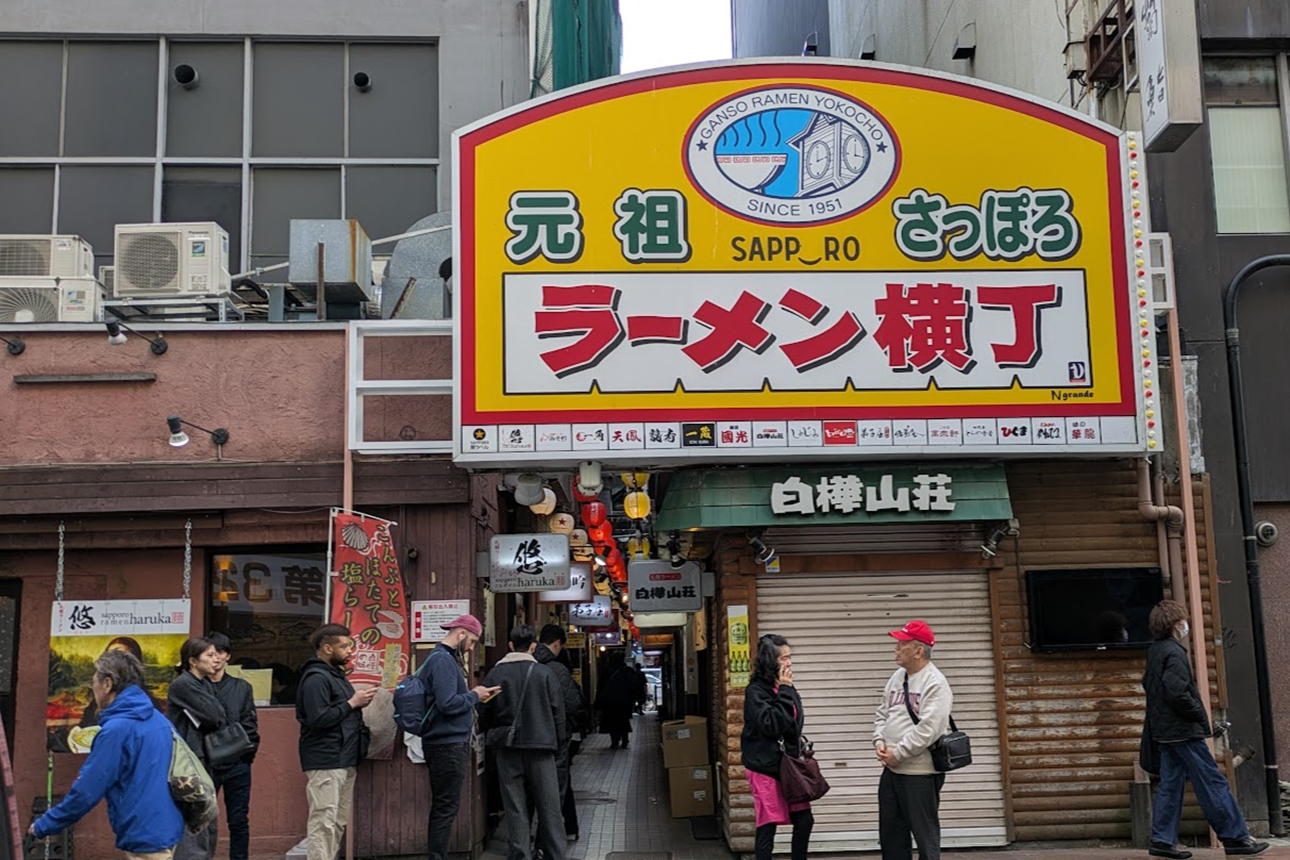
[ Aji no Sanpei ]
The first Sapporo miso ramen was invented here. In 1954, the founder created miso ramen in addition to soy sauce and salt flavoured ramen. The feature of this ramen is stir-fried minced meat, bean sprouts, onions, and other vegetables on top. Miso ramen goes well with its curly noodles. The chef worked with a noodle maker to develop noodles that go well with the thick miso broth and have a smooth texture when eaten. The soup has a rich flavour, but is not too heavy. This is the secret of why it has been popular for many years.
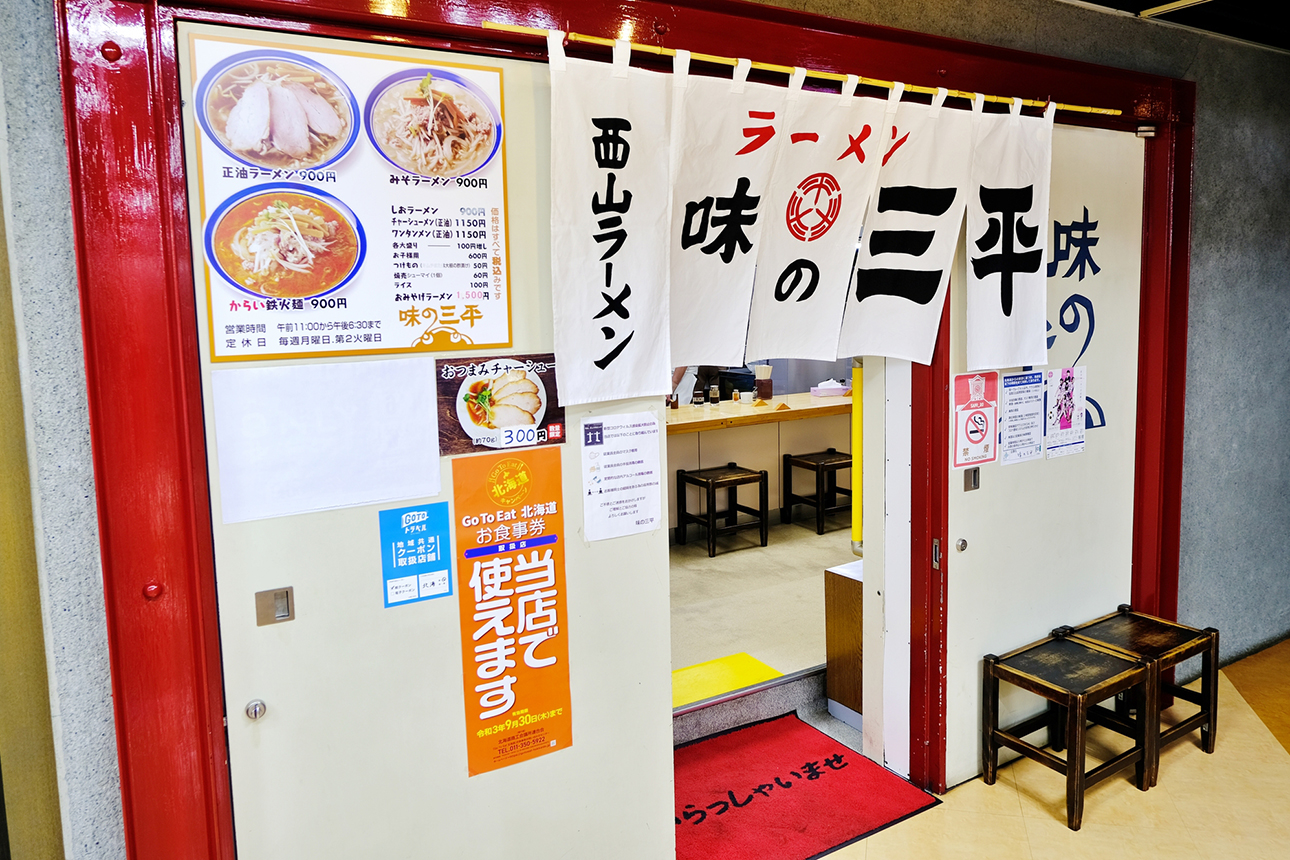
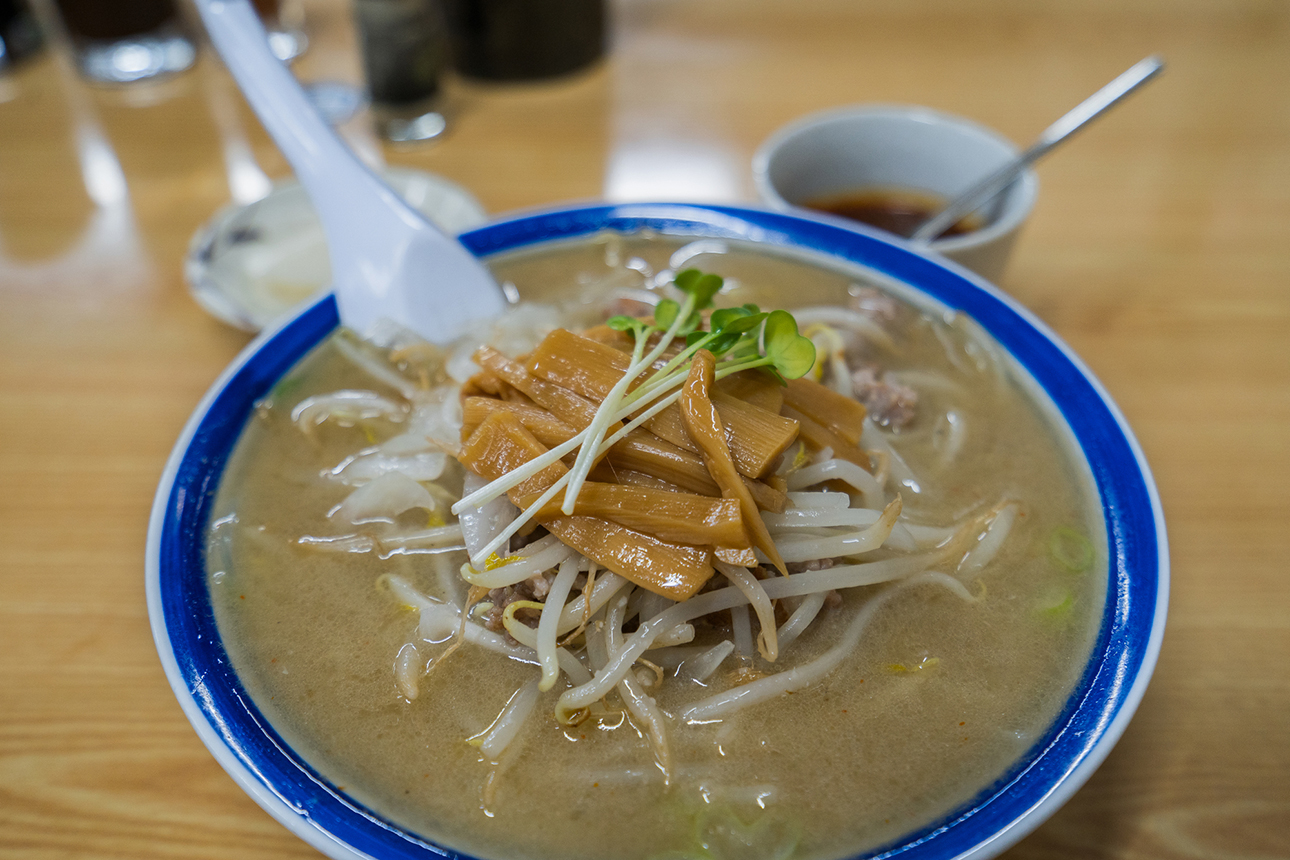
[ Daruma-ken ]
Located near Tanuki-koji shopping street on the So-sei riverside. It has been in business for 70 years. The most popular ramen in this shop is the soy sauce ramen. The straight noodles have a unique firmness and sweetness, and the soup, with a hint of oil, is light but full of umami flavour. Chicken and pork bones, Hokkaido onions, and kelp are simmered and combined with a sauce of soy sauce, ginger, and garlic. The flavour will keep you coming back for more.
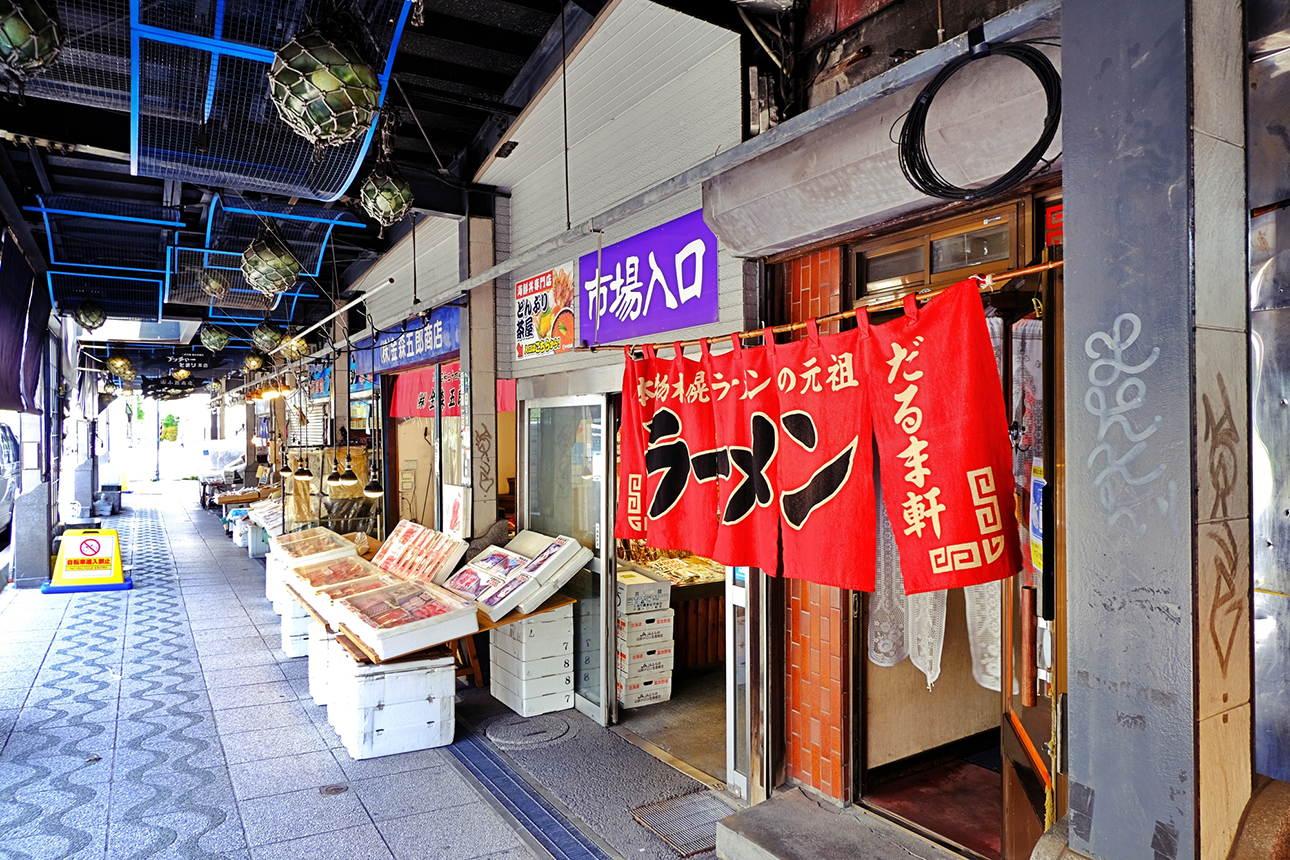
[ Ichiryu-an ]
This is conveniently located a 5-minute walk from Sapporo Station. The most popular dish is the Genki Morimori (meaning “full of vitality”) Ramen with Miso Flavour. The thick straight noodles and rich miso soup are so tasty. Toppings include fried bean sprouts, green onions, thick slices of roasted pork and scrambled eggs, which is rare for ramen. The robust seasoning is delicious. Half-sized servings are available, so you can have another bowl of ramen before or after.
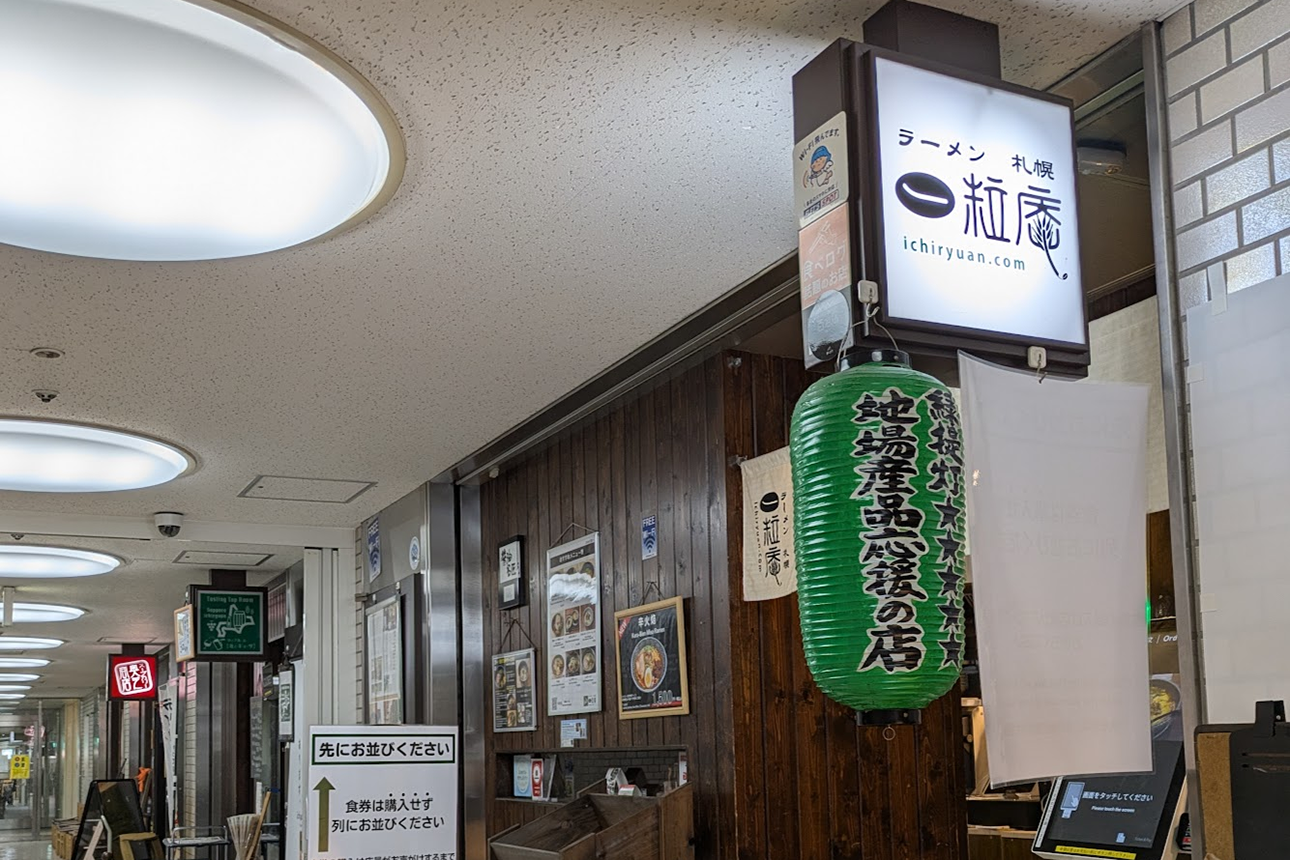
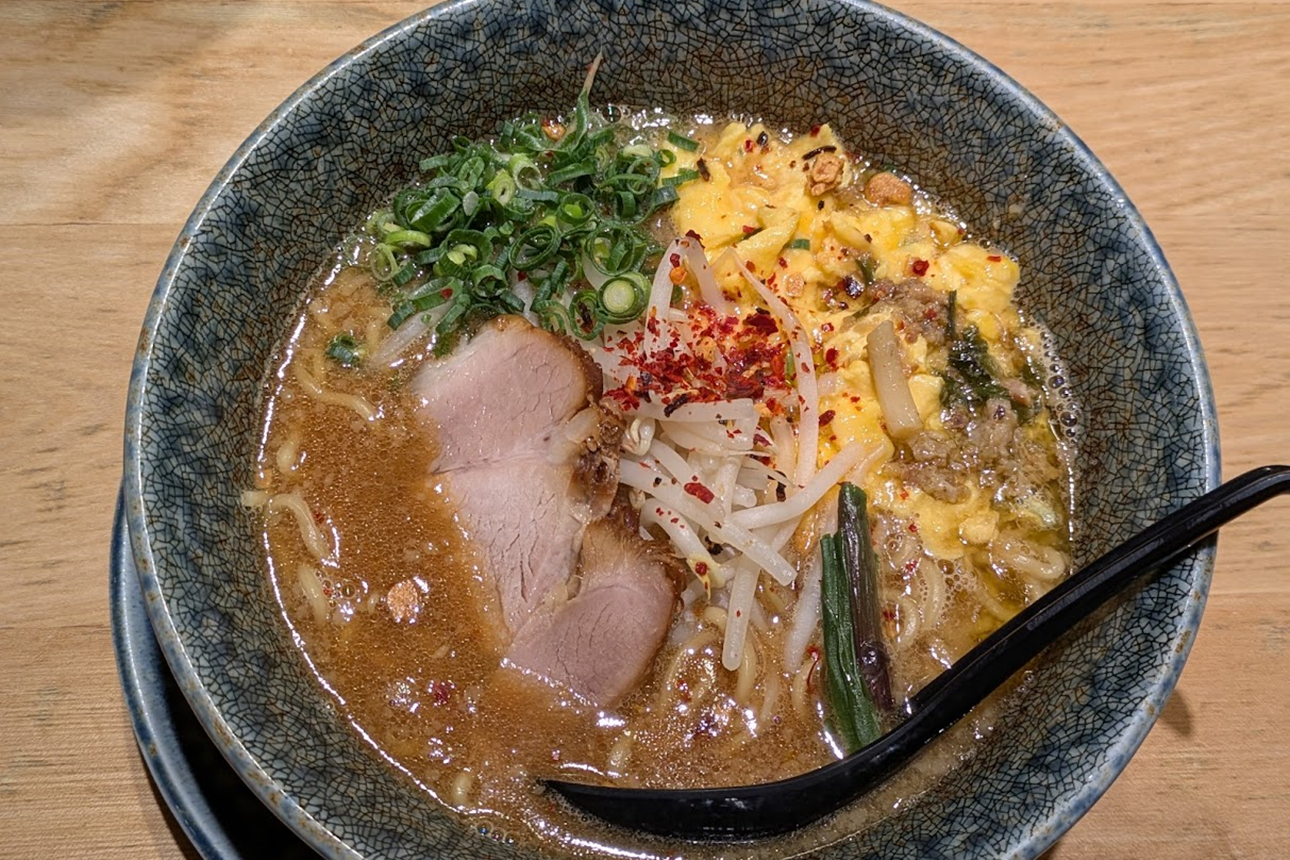
[ Menya Saimi ]
This is said to be the most popular ramen restaurant in Sapporo. There are always many people waiting in front of the shop. The most popular dish is Miso Ramen. The thick broth goes well with medium-thick noodles, and the grated ginger on top of crispy stir-fried vegetables accentuates the flavour of the ramen.
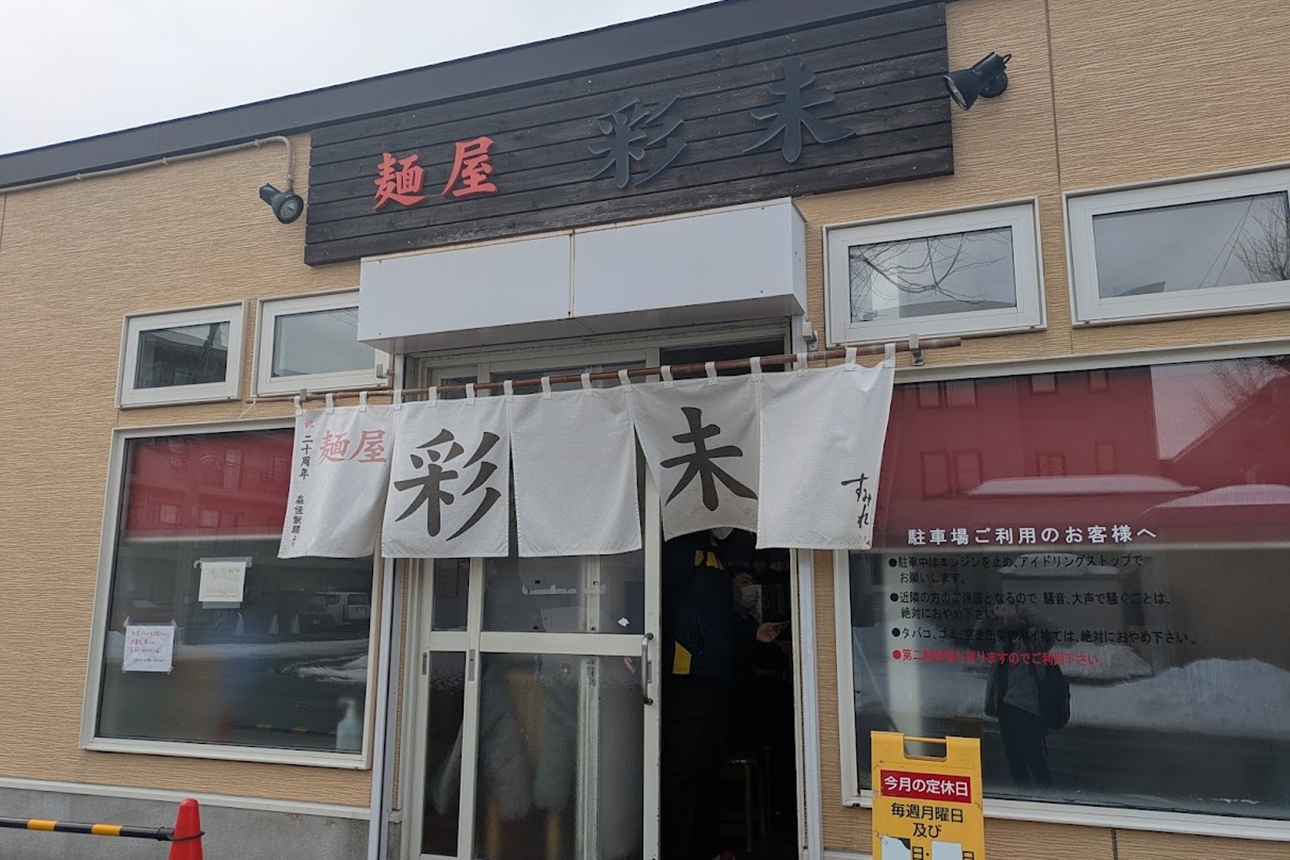
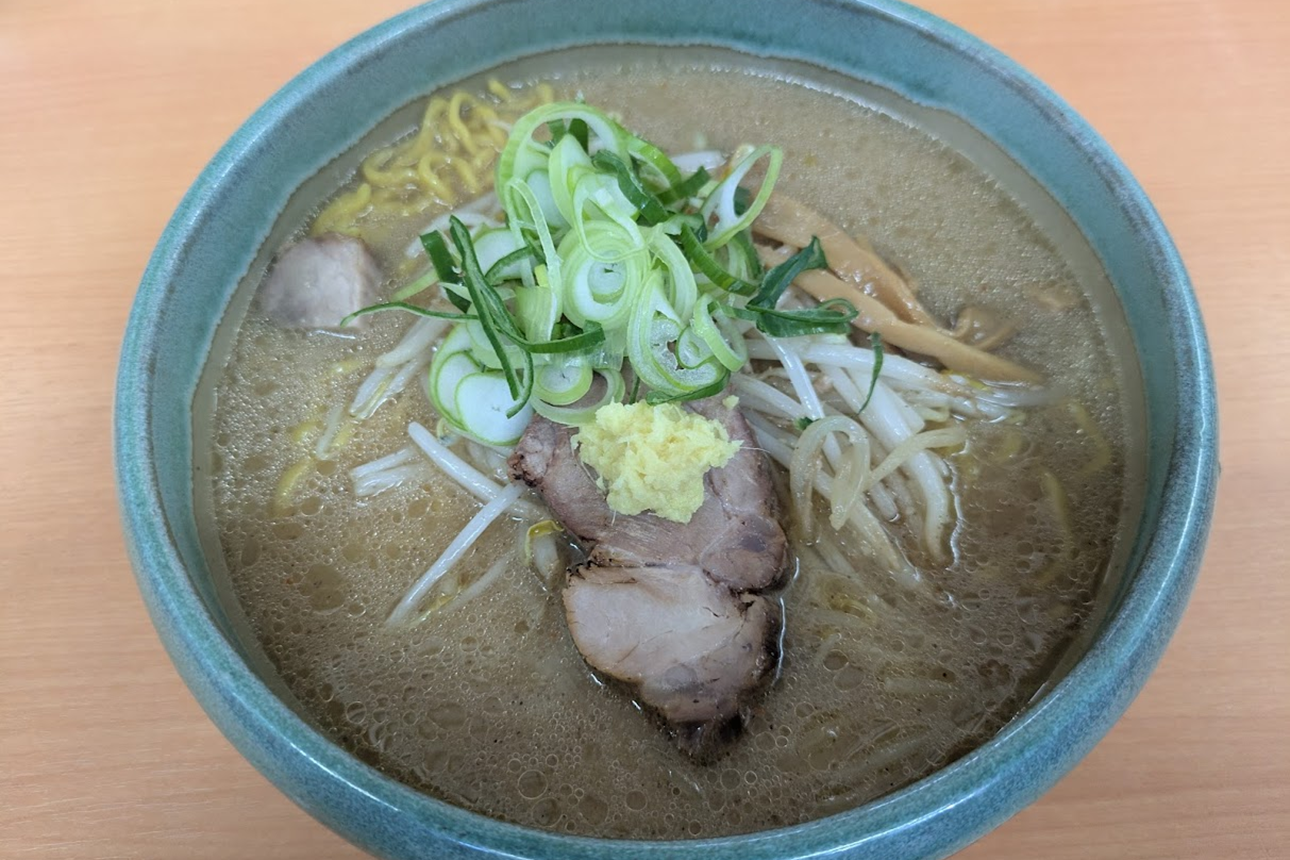
[ Japanese Ramen Noodle Lab Q ]
Their light flavoured soy sauce ramen is popular. The noodles are thin and straight. The ingredients are carefully selected, using local chicken and pork from Hokkaido, to give the ramen a delicate taste. It is also easily accessible, just a 2-minute walk from Odori Subway Station.
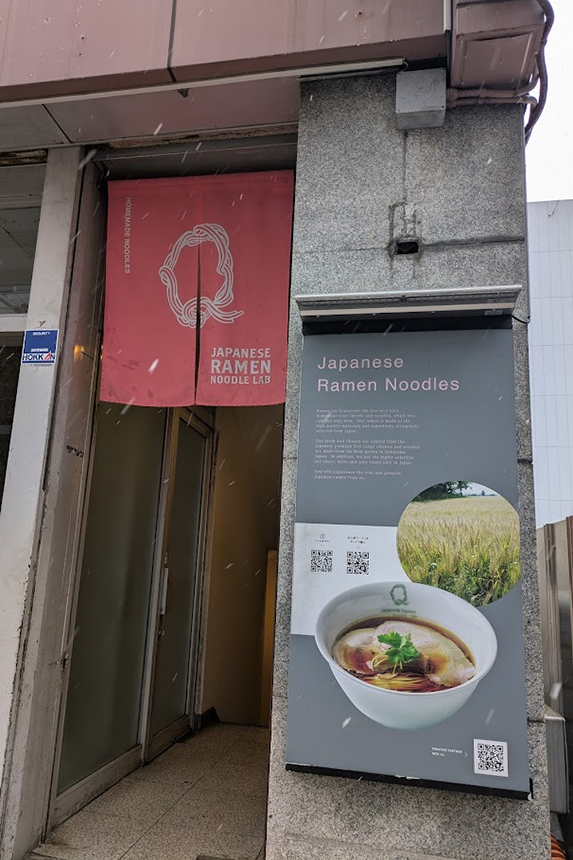
[ Shrimp ramen – Ichigen ]
Shrimp flavour has emerged as a new ramen trend in Japan. A pioneer of the boom, this famous restaurant has expanded to Tokyo and Kanagawa. The overwhelming impact of shrimp emerges in every aspect of the flavour and aroma. It has become a new gourmet specialty of Sapporo, changing the image that “Sapporo = miso ramen.” In addition to the main store near Nakajima Park, there is also a store at New Chitose Airport, so you can stop by if you have time before your flight.
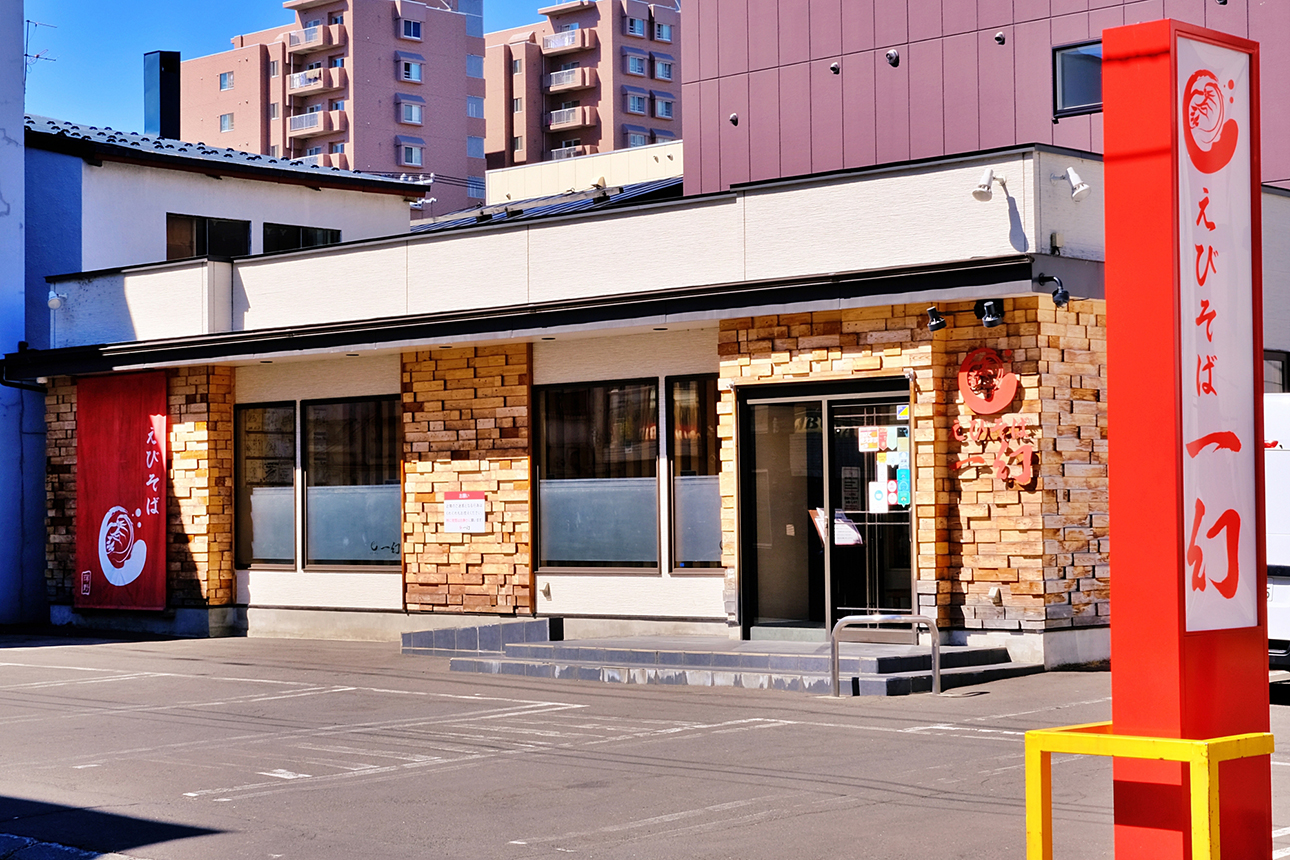
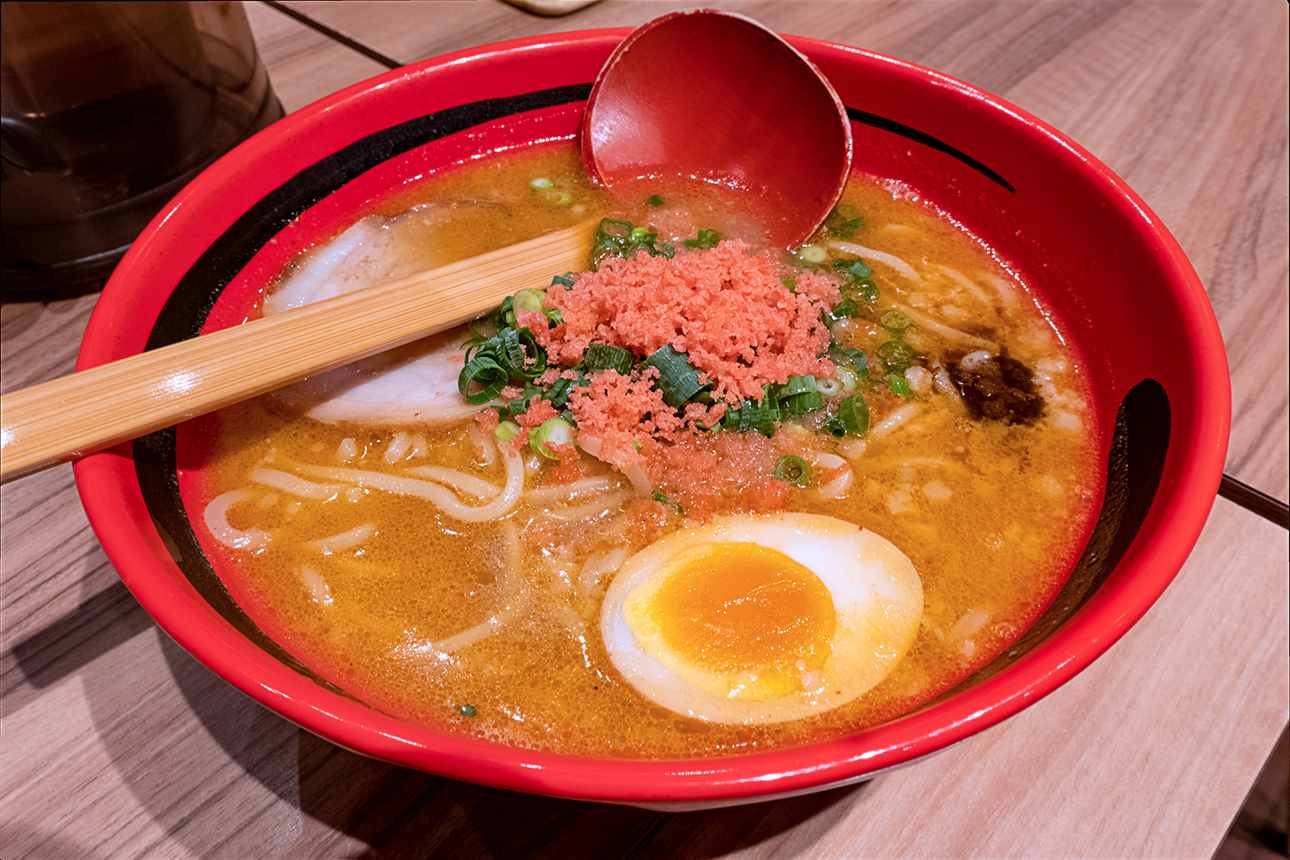
2) Hakodate salt ramen
Hakodate ramen is characterised by its clear, salt-based soup with seafood. It has a light flavour and goes well with straight thin noodles.
[ Hakodate Men-chubo (Noodle Kitchen) Ajisai ]
One of the most famous Hakodate salt ramen restaurants. Fans come from all over the country to enjoy the excellent clear soup made according to a recipe that has been passed down from generation to generation. The soup is based on kelp kombu from southern Hokkaido and contains pork bones, chicken bones, dried sardines, scallops, and other ingredients to create a flavour with depth. The noodles are straight and thin, and have an excellent firm texture. There are several branches, and one restaurant is located on the second floor of Hakodate Station, making it easy for travellers to eat here.
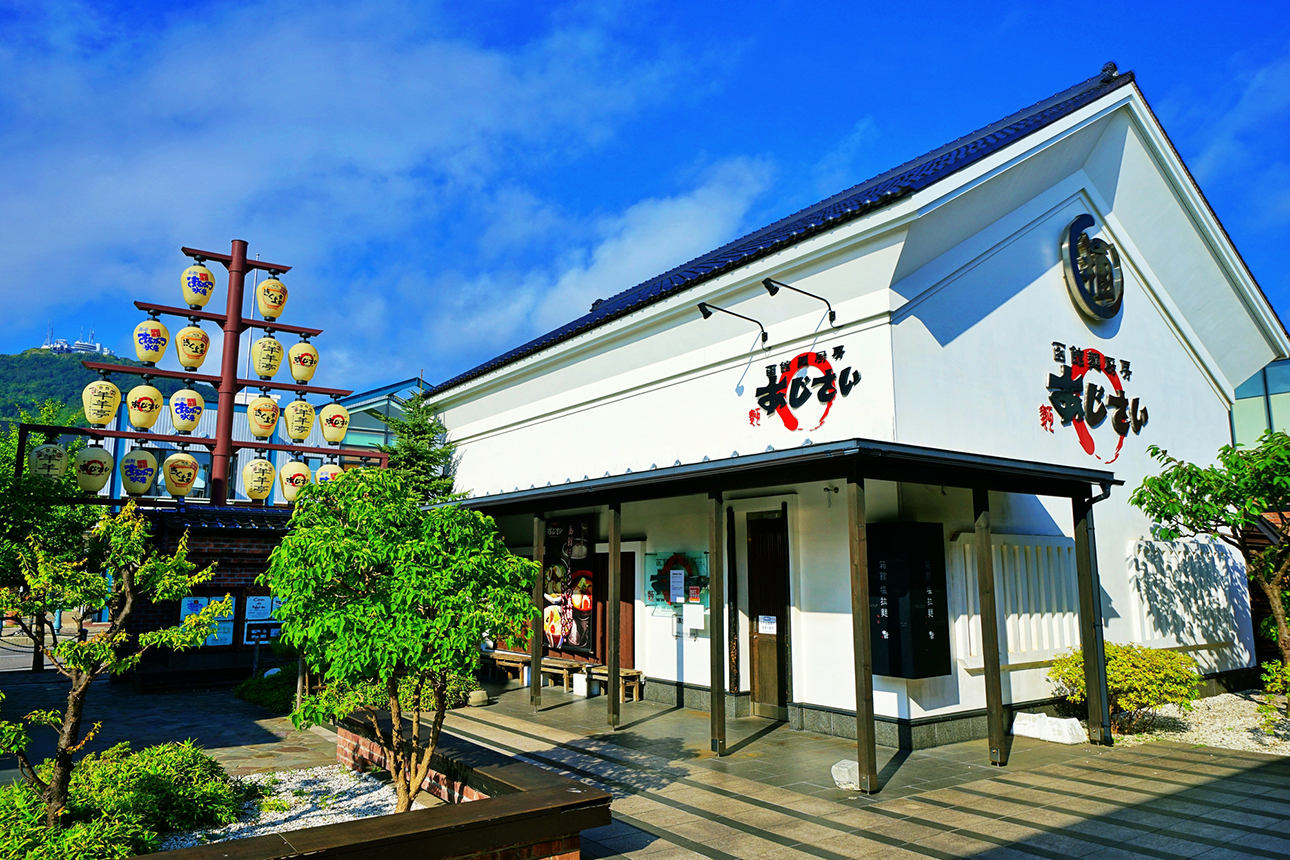
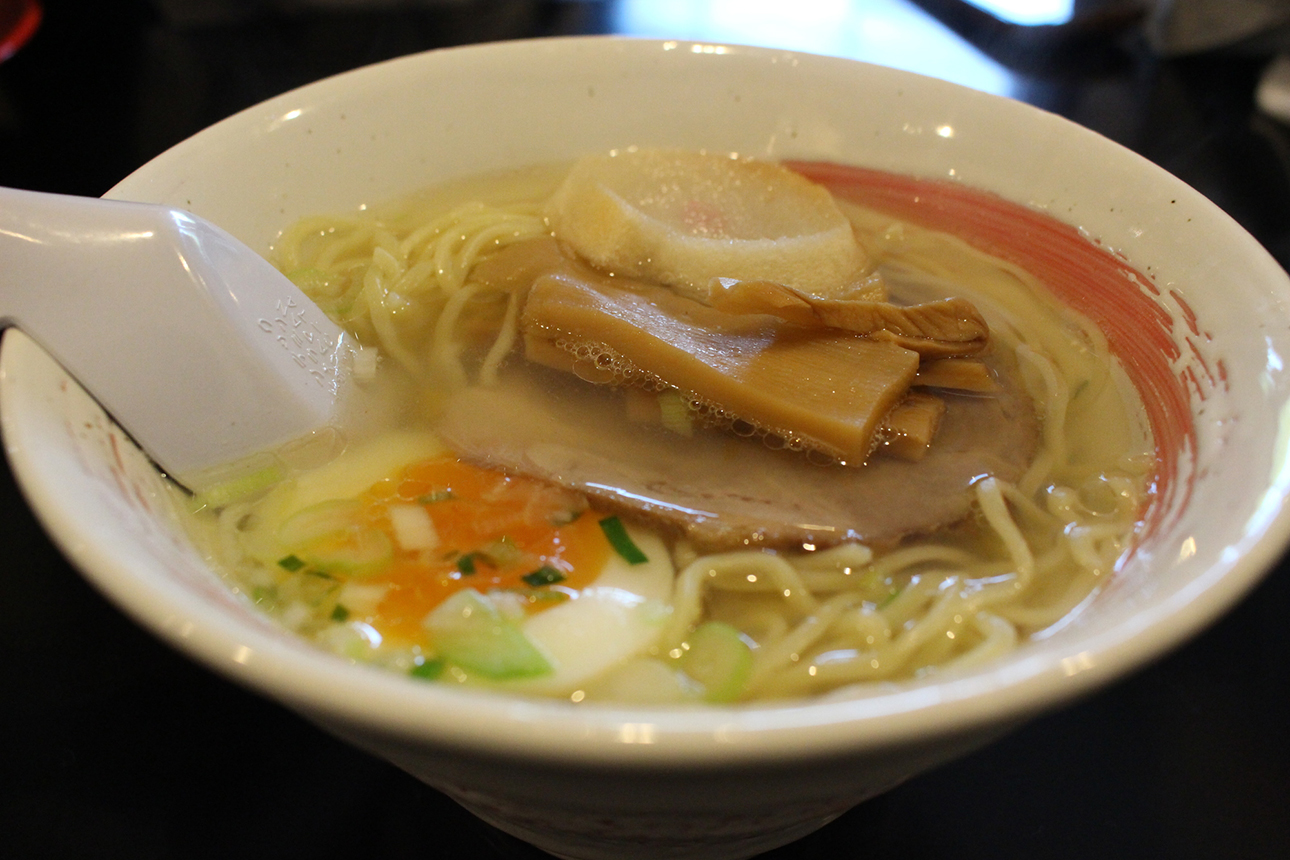
[ Jiyo-ken ]
This is a tasty salt ramen restaurant with a good location, just a 5-minute walk from Hakodate Station. Reasonably priced, excellent ramen can be had for just one coin, 500 yen. It is popular with a wide range of customers from the young to the old. Salt ramen is the most popular for its clear soup. This salt ramen broth is made by simmering for four hours without boiling, while continuously removing the scum, in order to create a clear soup. The delicate and clean soup that has been painstakingly prepared is truly exquisite. The medium-thick, straight noodles intertwine well with the soup.
3) Asahikawa ramen
Asahikawa ramen features a “double soup,” which is a blend of animal (pork or chicken) based soup and seafood based broths, a technique that has been used in Asahikawa for many years. The “double soup” with soy sauce goes well with thin, straight noodles. Another characteristic of Asahikawa ramen is adding lard to the soup. Asahikawa is famous for being one of the coldest cities in Hokkaido. By adding plenty of lard, the oil film acts like a lid, releasing less steam, so the soup is less likely to get cold.
[ Asahikawa Ramen Village ]
This was established in August 1996 by a group of popular Asahikawa ramen restaurants. They opened their branches in the same building. You can compare Asahikawa’s different flavours of ramen in one compact location.
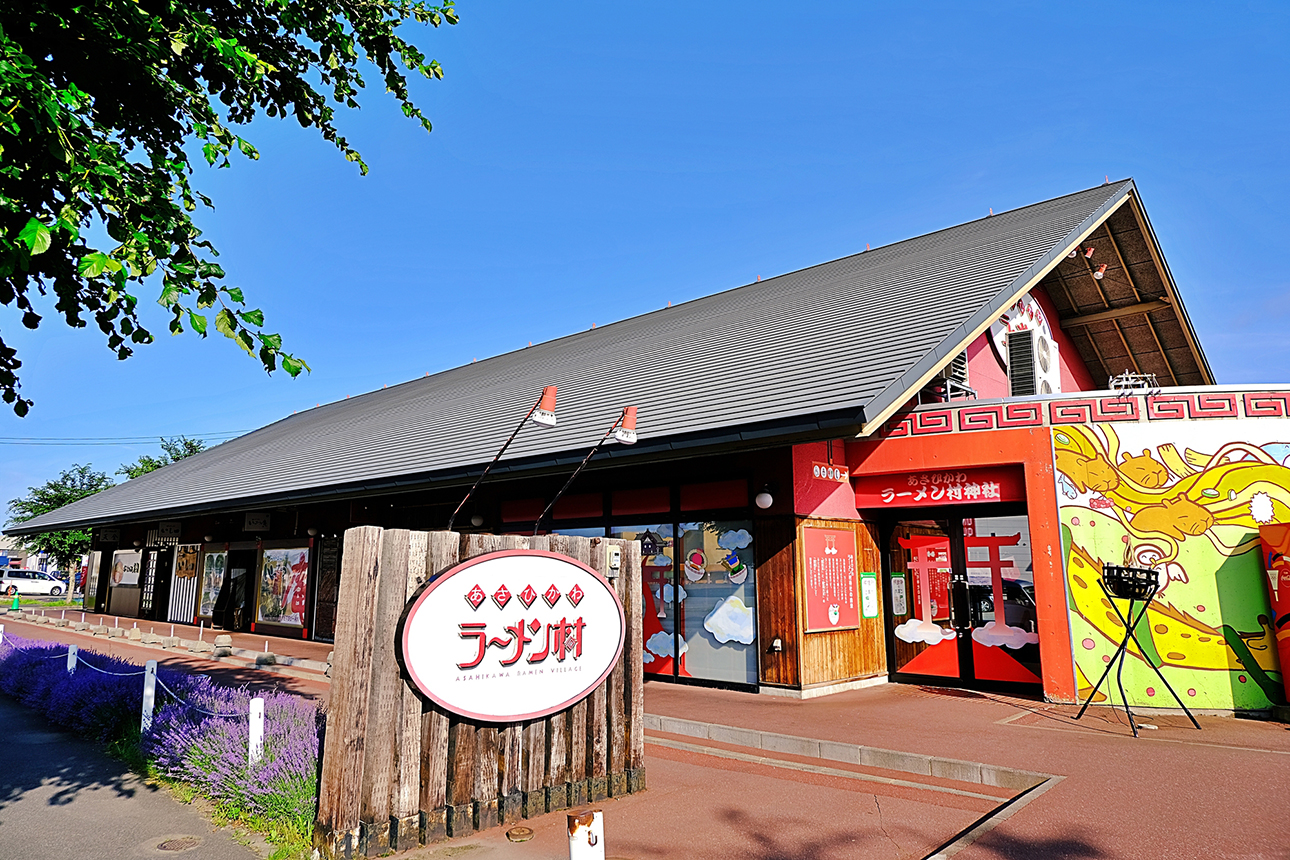
[ SANTOKA Asahikawa Main Store ]
This famous restaurant made salt and pork flavoured Asahikawa ramen well-known throughout Japan. Now, they have many branches in North America, Asia, and other countries. Unlike Asahikawa’s soy sauce ramen, the basic ramen taste is salt, with a cloudy white slightly thick-flavoured soup. It is conveniently located just a short walk from Asahikawa Station, and is open until relatively late.
[ Baiko-ken ]
The main restaurant is located in Asahikawa and is known nationwide. It is also a famous ramen chain restaurant that originated in Asahikawa and has many branches around the world. While SANTOKA serves its original salt ramen, this restaurant serves soy sauce ramen, which is traditionally served in Asahikawa. Many people find the moderate thickness of the soup highly acceptable. The noodles are the standard curly noodles, and they mix well with the soup.
[ Asahikawa Ramen Aoba ]
Founded in 1947, this is a long-established ramen store representative of Asahikawa that has been in business since shortly after the end of World War II. The atmosphere of this restaurant is just like in the good old days of the Showa era (1925-1989). It’s completely different from the modern, fashionable shops of recent trends. If you would like to try a typical old traditional ramen restaurant, it’s the perfect place! The soup is typical of Asahikawa ramen, combining pork and other animal ingredients with dried fish and seafood, and to prevent the soup from getting cold, a lot of lard is added to the surface. The soup is served with medium-curly noodles. It’s only a few minutes’ walk from Asahikawa Station, and is always crowded with customers, both locals and tourists.
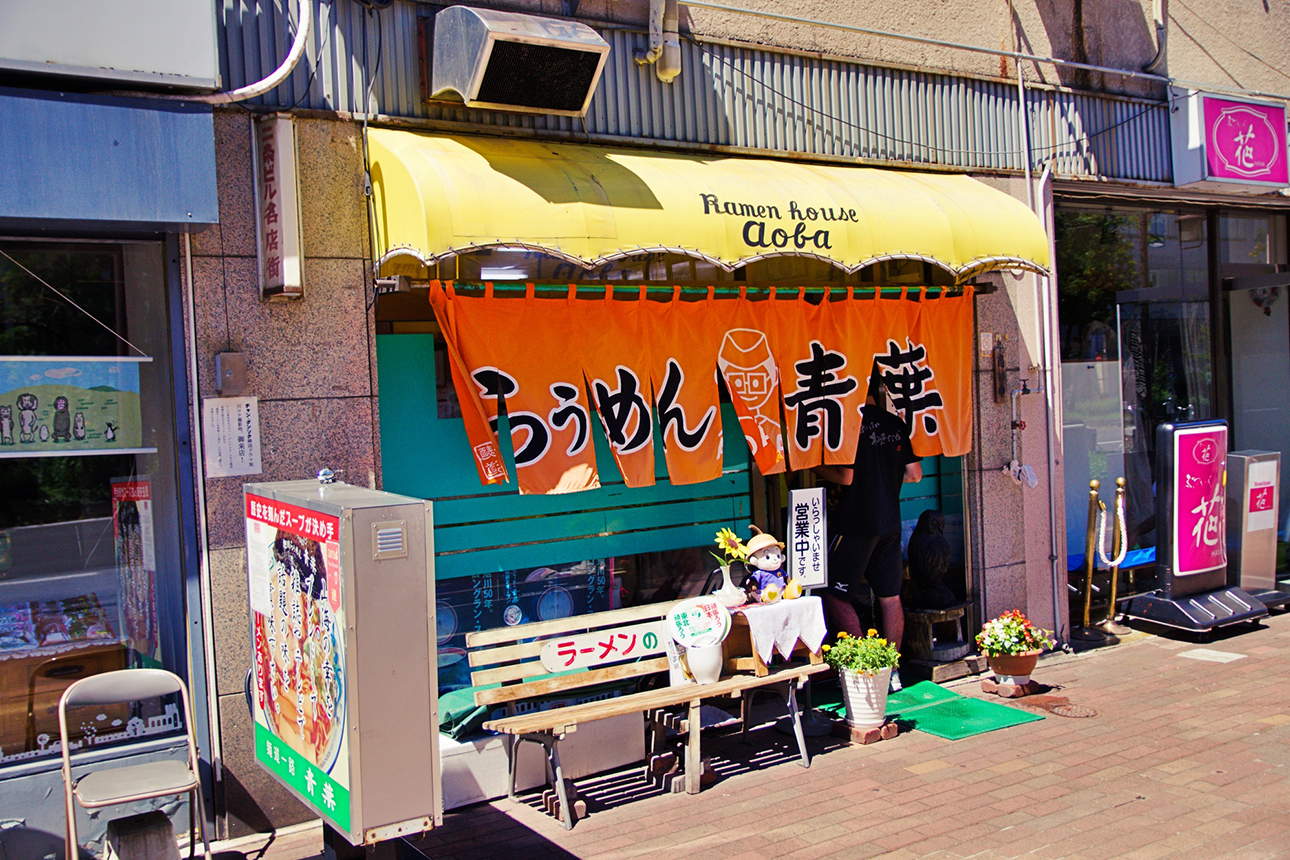
4) Kushiro ramen
Kushiro’s ramen is characterised by a light soy sauce-based soup and thin, frizzled noodles. It has a light texture and a taste you will never get tired of.
[ Maruhira ]
A long-established favourite in Kushiro. It offers simple ramen with a depth of flavour.
5) Muroran curry ramen
Muroran, a port city facing the Pacific Ocean, is famous for curry-flavoured ramen as a local specialty. The combination of spicy curry soup and noodles is a new taste.
[ Aji no Daioh ]
Known as the originator of curry ramen, its flavour is loved by many people.
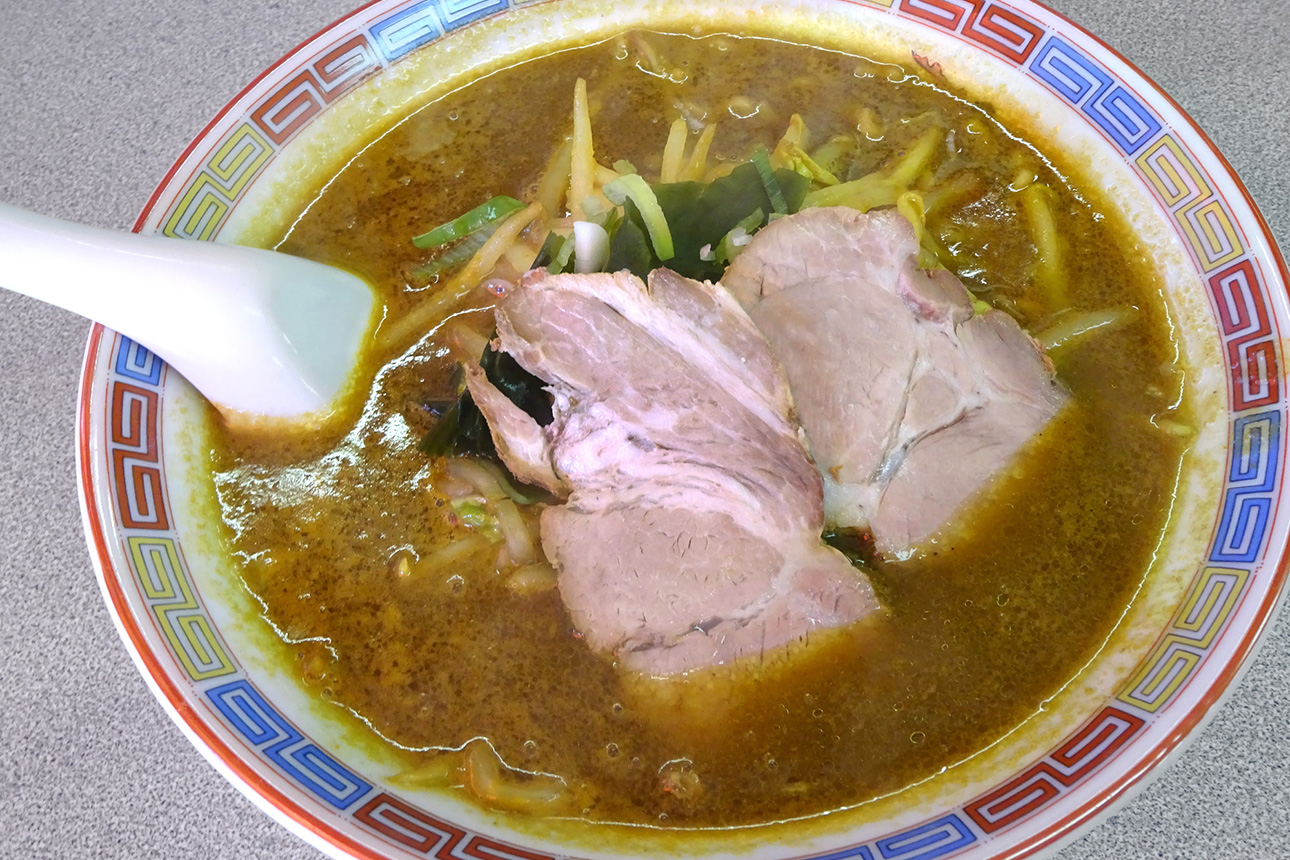
As we have seen above, there are many different types of ramen in Hokkaido. It is famous not only in Japan but also around the world. Sapporo ramen in particular is a must-eat dish when you visit Hokkaido.
Hokkaido Treasure Island Travel Agency can arrange a tailor-made trip according to your wishes. Our English-speaking local guides will assist you on your trip. You can also enjoy a tour to explore local ramen shops, which are difficult to visit on your own. We hope you will find your favourite ramen restaurant in Hokkaido!
